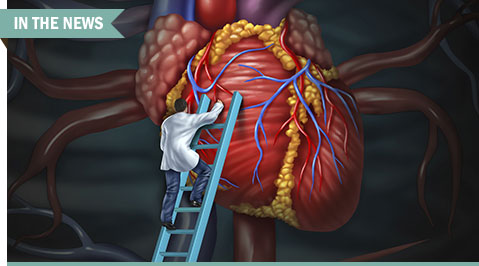 Image credit: wildpixel/Thinkstockphotos.com
Image credit: wildpixel/Thinkstockphotos.com
New federal guidelines on managing dyslipidemia and reducing cardiovascular risk (CVD) in adults endorses nonfasting tests and cautions against using cholesterol levels as treatment targets.
Joint clinical practice guidelines issued by the U.S. Department of Veterans Affairs (VA) and U.S. Department of Defense (DoD) and published in the Annals of Internal Medicine make recommendations in five areas: laboratory testing; the elimination of treatment targets; additional tests for risk prediction, and primary and secondary prevention.
Controversy has surrounded this subject since the American College of Cardiology/American Heart Association (ACC/AHA) issued new guidelines indicating that cholesterol targets were no longer necessary, and recommending a new quantitative risk calculator to guide care for CVD. While the new VA/DoD guidelines do concur with ACC/AHA on some points, differences exist between the two sets of recommendations.
The two respective guidelines are in agreement that cholesterol levels should not be used as treatment targets. The VA/DoD points to a lack of clear-cut evidence about target cholesterol goals, “which can lead to physicians prescribing escalating doses of statins and combinations of drugs with higher rates of adverse effects without known benefit in outcomes,” the guidelines stated.
The VA/DoD said it could not identify any trials illustrating the advantages of using low-density lipoprotein cholesterol (LDL-C) or non–high-density lipoprotein cholesterol targets. By comparison, moderate fixed-dose statin monotherapy has been shown to reduce CVD and improve mortality rates, the VA/DoD noted.
Assessing the differences between the ACC/AHA and VA/DoD guidelines, the American College of Physicians (ACP) in a statement observed that the VA/DoD included a more extended research review and took a more conservative approach on recommending additional tests to refine risk prediction, stating that there needed to be a clear reason for administering such tests.
“Once the patient's 10-year risk has been calculated, the VA/DoD recommends shared decision-making to determine whether the potential benefits of medications outweigh the potential harms for each patient, which is a more nuanced approach than that of the ACC/AHA,” ACP observed.
In the section on lab testing, the VA/DoD guidelines recommend nonfasting laboratory tests as an accurate measure for calculating risk—and recommends against routine monitoring of lipids once a statin is initiated.
Routine fasting tests are a hassle for both labs and patients, according to the VA/DoD. “Most patients do not come to clinic visits while fasting; thus, they are required to take time away from work or family and bear the expense and bother of a second visit after fasting. Some patients are unwilling to fast or to return and avoid lipid testing altogether,” according to the guidelines.
In addition, labs have to accommodate large numbers of patients who come to the lab early in the morning to get tested following an overnight fast.
According to the VA/DoD, there’s little variation in what a 9- to 12-hour fast would produce, versus a non-fasting lab test that measures for high-density lipoprotein cholesterol (HDL-C) levels and total cholesterol.
“Compared with fasting measures, nonfasting LDL-C level may be 10% lower and triglyceride levels may be as much as 20% higher. Lipid measures are necessary to enable risk calculation based only on measures of total cholesterol and HDL-C levels, and the small variance in LDL-C level is unlikely to affect classification of risk or therapeutic decisions. Thus, a nonfasting lipid profile provides acceptably accurate measures for risk calculation,” according to the guidelines.
Due to concerns that statins might aggravate hepatotoxicity, the VA/DoD guidelines recommend “assessing for evidence of liver damage before initiating statin therapy and avoiding statins in patients with evidence of worsening liver damage or fluctuating results on liver function tests.”